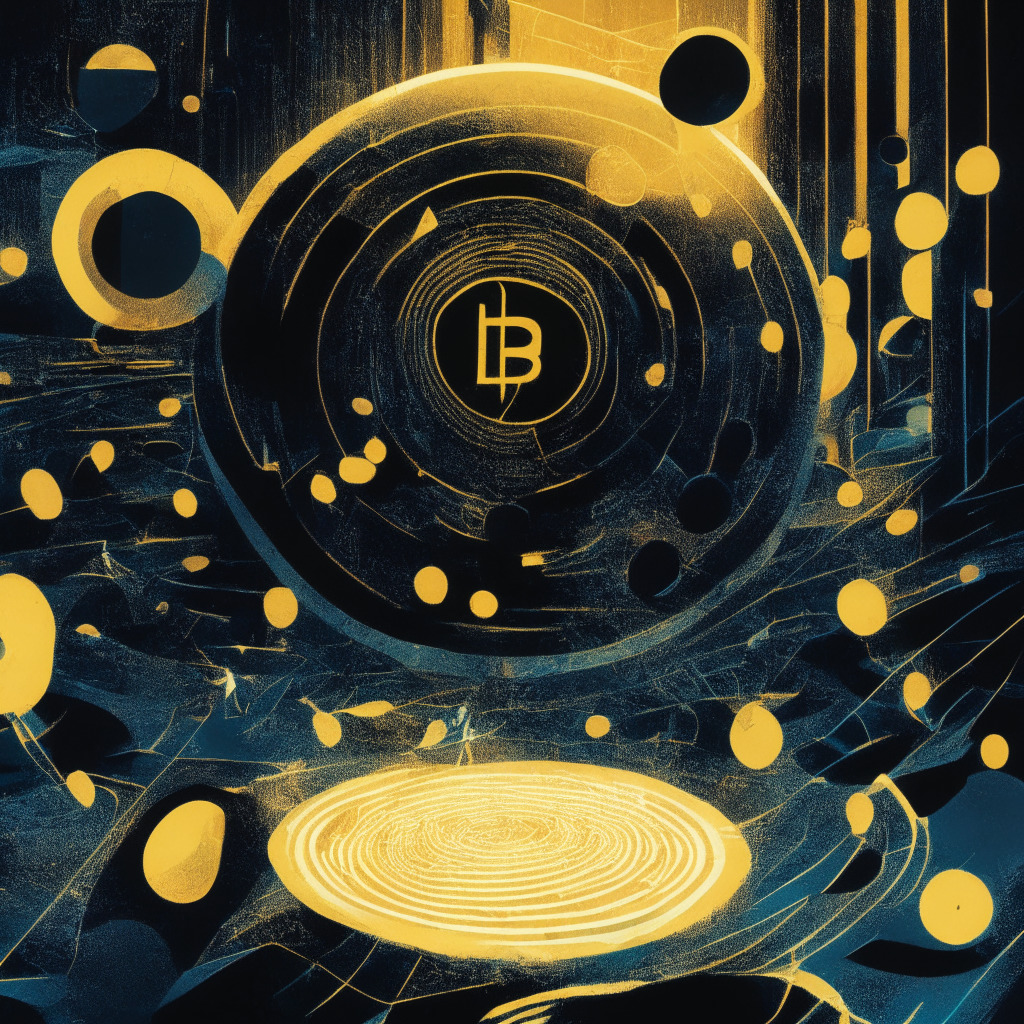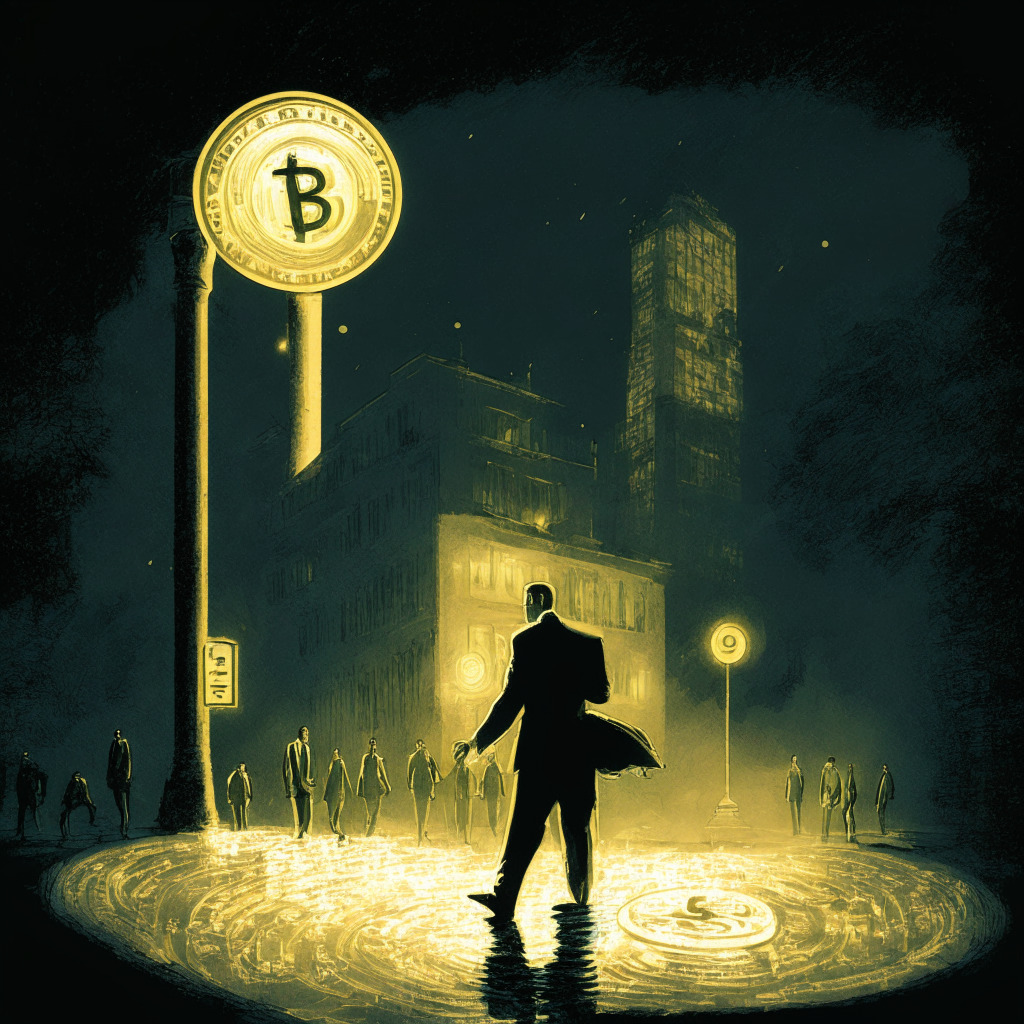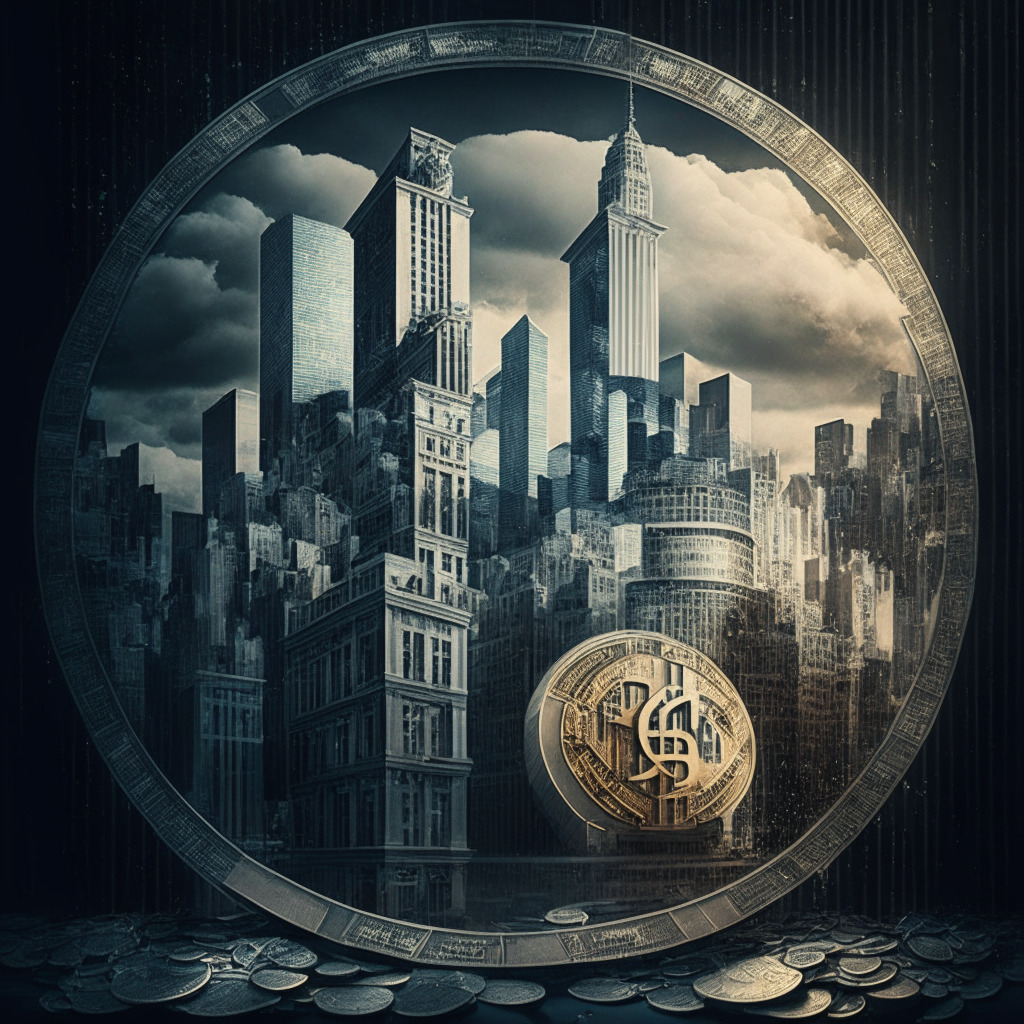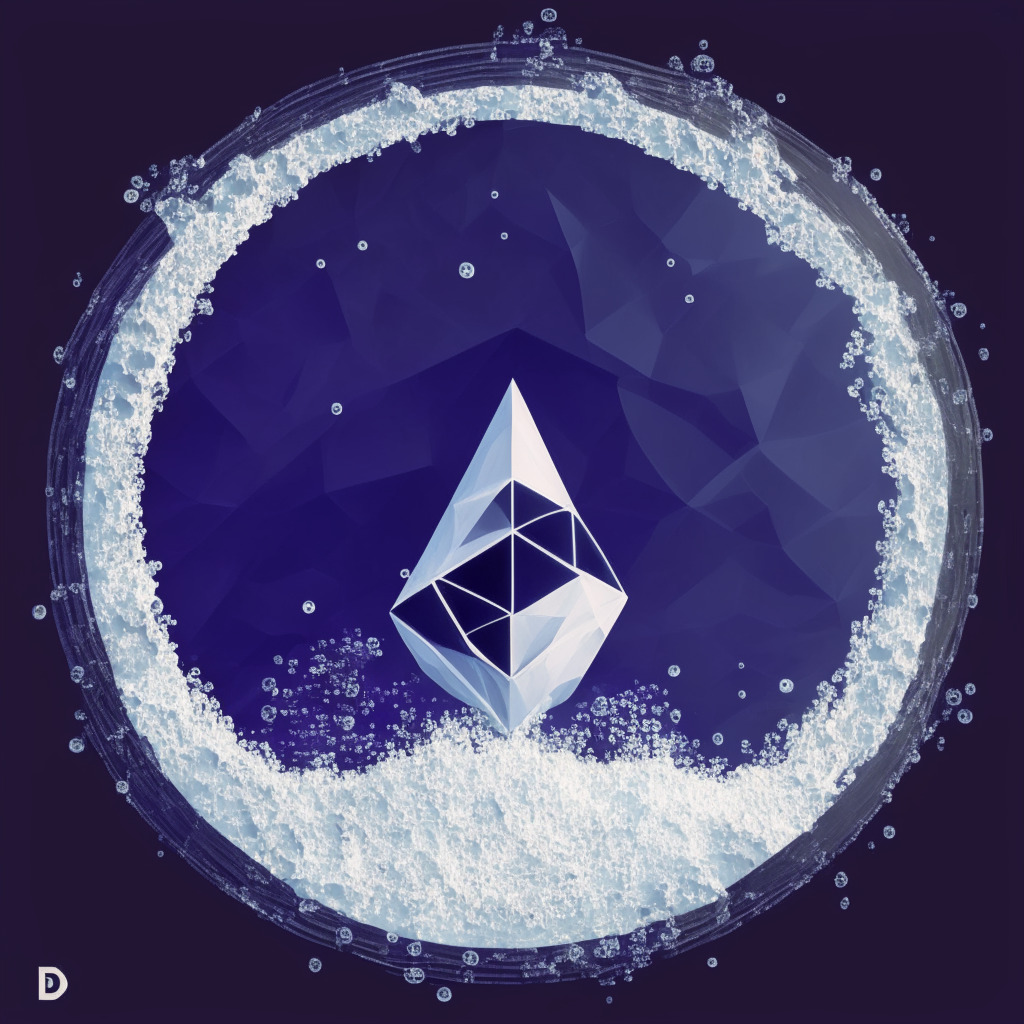The SEC has sued Binance for legal violations involving crypto tokens BNB and BUSD, and Circle argues that these stablecoins aren’t securities as their acquisition doesn’t foresee profit-making. Meanwhile, Gemini is closing its Netherlands operations for failing to meet regulatory requirements, highlighting growing tensions between crypto platforms and financial regulatory bodies.
Search Results for: Circle coin
Expanding the Stablecoin Universe: Circle’s EURC Now on Stellar Network
Stablecoin issuer Circle has introduced a new version of its euro-backed stablecoin, EURC, now available on the Stellar network. This innovation offers users the ability to handle business via blockchain networks in local currencies. However, converting blockchain transactions into local currencies remains complicated, highlighting the integration challenges that the blockchain community faces.
Circle’s Stablecoin USDC Set to Launch on the Base Network: A Leap Forward or a Leap of Faith?
Circle’s CEO Jeremy Allaire recently announced a significant shift for the company’s U.S. dollar-pegged stablecoin, USDC, which will now launch natively on the Base network. This aims to gradually reduce the need for a bridged coin backed by the Ethereum variant. Despite the development, underlying trust issues remain, emphasising the stability of the Base network and potential issues resulting from reliance on bridged tokens.
Coinbase Acquires Stake in Circle: Betting Big on Stablecoins and Shaping Cryptocurrency Markets
Coinbase has acquired a minority stake in Circle Internet Financial and both companies dissolved their Centre Consortium associated with issuing USD Coin (USDC). Amid greater regulatory clarity, Circle will become the sole issuer of USDC and control reserve governance, facilitating its integration on various blockchains. This shifting control indicates wider stablecoin adoption in the crypto economy.
Coinbase’s Curveball: Acquiring Stake in Circle and Impact on USDC, Coupled With Emerging Legal Battles and Friend.tech’s Surprising Growth
Cryptocurrency exchange Coinbase acquired a minority stake in Circle Internet Financial, causing the dissolution of their Centre Consortium venture, responsible for issuing USD Coin (USDC). Despite this, Circle plans to continue in-house issuance and governance of USDC, which is expanding its support network to include six additional blockchains. Notably, no cash was involved in the transaction between Coinbase and Circle.
Coinbase and Circle Redefine Ties Amid Revised Stablecoin Structure: Exploring the Implications
Coinbase has taken an equity stake in Circle amid a halt in the USDC Centre Consortium’s operations, due to a more regulated environment, removing the need for a separate governance body. Circle will now be responsible for regulatory compliance and controlling the stablecoin’s smart contract keys, while plans are underway for USDC’s expansion onto six new blockchains.
Coinbase Set to Acquire Minority Stake in Circle amidst USD Coin Developments
Coinbase is reportedly purchasing a minority stake in Circle Internet Financial, which coincides with Circle bringing the issuance of the USD Coin entirely in-house. Additionally, six more blockchains are to be integrated with USDC. This move comes amidst increasing competition and regulations within the stablecoin environment.
Stablecoin Surge: Circle CEO Advocates for Digital Money Revolution and Its Impacts on Global Economy
Jeremy Allaire, CEO of Circle, highlights the need for fast progression of digital dollar and stablecoin development to preserve the vitality of the US dollar. In context of rising crypto adoption, he implies digital currencies potentially shaping future global commerce and payment protocols.
Navigating the Waves: Circle’s Visionary Take on Japan’s Stablecoin Market Revolution
Circle is targeting the Japanese market following that country’s new stablecoin regulations. According to CEO Jeremy Allaire, Japan has created a legal structure conducive to overseas stablecoins, which might transform it into a significant market for Circle’s USDC stablecoin. The regulations stipulate that stablecoins must be fully backed by yen or another legal tender.
Former Goldman Sachs Executive Joins Circle’s Board: What This Means for Future of Stablecoins
Former Goldman Sachs executive, Craig Broderick, has joined the Board of Directors of Circle Internet Financial, creator of the USDC stablecoin. Broderick’s substantial financial experience is expected to guide Circle in robust risk management, crucial in the evolving crypto environment. Concurrent with this, former CFTC chair Heath Tarbert has been recruited as Chief Legal Officer, marking a strategic push for regulatory clarity.
Circle’s Ties to Collapsed SVB: Stablecoins’ Resilience and Lessons in Risk Management
The now-collapsed Silicon Valley Bank (SVB) reportedly had Circle as its single largest asset-weighted customer, holding $3.3 billion at the time of collapse. The incident raises questions about stablecoins like Circle’s USDC and underlines the importance of due diligence and contingency planning in the crypto industry.
Heath Tarbert Joins Circle: A Regulatory Game Changer for Stablecoins and Crypto Markets
Circle hires Heath Tarbert as Chief Legal Officer in order to leverage his expertise amid regulatory challenges. Circle’s CEO believes Tarbert’s background in international organizations and governments will prove crucial for building durable relationships while advocating for comprehensive stablecoin legislation to restore confidence in digital assets.
Regulatory Turmoil: SEC’s Coinbase Decision, Circle’s Singapore License & Delayed Philippine Framework
The US Court of Appeals for the Third Circuit recently ordered the SEC to clarify its position on a rulemaking petition from Coinbase, while Circle Singapore secured its MPI license for digital payment token services. The Philippines’ SEC delayed the issuance of a digital assets framework, and Ark Investment Management purchased $21.6 million in Coinbase shares after the SEC lawsuit caused prices to drop.
Singapore MPI License for Circle: Stablecoin Progress or Restrictive Regulations?
Circle Singapore, an affiliate of Circle Internet Financial, received a Major Payment Institution (MPI) license from the Monetary Authority of Singapore (MAS). This allows them to offer digital payment token services, cross-border and domestic money transfers within Singapore. The move signifies regulatory progress in the cryptocurrency and blockchain industries, but proposed restrictions on stablecoin activities like lending and staking raise concerns.
Circle’s USDC Stablecoin Launch on Arbitrum: Impacts and Prospects for Blockchain Growth
Circle, a US-based payments firm issuing the USD Coin (USDC) stablecoin, is set to launch its coin natively on Arbitrum, an Ethereum scaling solution, on June 8th. This will provide benefits like maintaining a 1:1 exchange ratio with the US dollar, offering institutional on/off ramps, and supporting the forthcoming Cross-Chain Transfer Protocol (CCTP), which aims to eliminate bridge withdrawal delays.
US Debt Default and Stablecoins: How Circle Aims to Protect USDC Reserves with Repo Agreements
Circle Internet Financial is adjusting the reserves behind the $30 billion USD Coin, considering the possibility of a U.S. government debt default. BlackRock manages the Circle Reserve Fund, now incorporating $8.7 billion in overnight repo agreements as extra protection for the USDC reserve.
Bridging the Gap: Circle’s Cross-Chain Protocol and Visa’s Crypto Project Revolutionize Stablecoin Payments
Circle, a global fintech firm, recently launched a cross-chain protocol that enables seamless USDC transfers […]
Unraveling Circle’s Launch of Native USDC on Ethereum Layer 2: Innovation, Adoption, and Potential Risks
Circle, the blockchain and finance tech firm, has revealed its native USDC tokens on the Ethereum Layer 2 scaling protocol, Polygon. This move aims to allow smoother accessibility of USDC to users and developers. Businesses using USDC on Polygon can create decentralized applications for near-instant, low-cost transactions, revolutionizing payments, remittances and trading. However, adoption faces challenges including complex technology and security concerns.
Navigating the Crypto Market’s Intensity: The Rise of Bitcoin Dominance vs The Plight of Altcoins
“Bitcoin’s dominance over other altcoins has reached a three-month high, resulting in uncertainty for altcoins and potential short opportunities for traders. Experts suggest that Bitcoin could climb towards $35,000-$40,000 if it breaches the $28,000 barrier. However, market stability remains relative, with every investment carrying a degree of risk.”
PayPal’s PYUSD Stablecoin: Welcomed Asset or Threat to Tether’s Predominance?
Tether co-founder, William Quigley, in a recent interview expressed skepticism towards the acceptance of PayPal’s impending stablecoin. Highlighting that cryptocurrencies earn credibility over time, he outlined that new entrant, PayPal, would face challenges in gaining trust and performance reputation among crypto users. He flagged significant regulatory challenges and the high cost of compliance as potential hurdles for PayPal’s stablecoin.
Unleashing the Meme Kombat Revolution: Merging Gaming, Meme Coins and Gambling
“Meme Kombat, a new platform in the crypto world, aims to combine gaming, meme coins and gambling. It stands out for offering rewarding staking programs and by integrating wealth accumulation with gaming fun. A crucial feature is its audited security, yielding no significant issues.”
Navigating the Regulatory Maze: Driving Stablecoin Legislation Under Biden’s Administration
Chair Patrick McHenry of the US House of Representatives’ Financial Services Committee affirms his commitment to regulate stablecoins. He steers two digital asset bills targeted at stablecoin regulation, and bringing clarity to the role between the CFTC and SEC. McHenry highlights potential bipartisan support and the global influence of dollar-denominated stablecoins, emphasizing complex power dynamics beyond the digital asset scope.
Stablecoins: Revolution in Progress or Ticking Time Bomb? Unraveling the Crypto Quandary
“In the world of digital assets, the role and impact of stablecoins is increasingly complex. Despite declining holdings in exchanges and concerns about their potential financial instability, Tether-based stablecoin loans have increased in 2023. The place of stablecoins in crypto markets presents an intricate web of contradictions and uncertainties.”
Bitcoin Bounce at $27,000: Market Trends, Trader Wariness and a Legal Tangle with the SEC
“BTC’s volatility has resulted in a ‘short squeeze’, struggling to consolidate gains at around $27,000. Market activity has been largely driven by ‘perpetual’ traders, with $27,200 remaining a volatile point. Legal issues, such as Binance’s SEC lawsuit, also impact the digital currency landscape.”
Unraveling the Crypto Carousel: SEC vs Binance, and the Circle Defence
The blog post discusses the legal fight between the SEC and cryptocurrency exchange Binance over the classification of digital assets as securities. It also touches on Circle’s argument that stablecoins linked to the U.S. dollar, such as BUSD and USDC, shouldn’t be categorised as securities. The outcome of the legal battle could greatly impact the future of cryptocurrency regulations.
Bitcoin Ordinals, the Invisible Friend or Foe? Unraveling their Impact on Network Congestion and Market Dynamics
“Ordinals, a method of registering digital content on the Bitcoin network, are seen as disruptive by some. However, analytics firm Glassnode finds little proof that they’re causing network congestion. Despite concerns, these bitcoin ‘pocket fillers’ seem to coexist with other money transfers, leveraging cheap block space without greatly impacting transfer volumes.”
Pushing Boundaries: Binance’s Plan for Stablecoins Expansion in Japan
“Binance plans to launch stablecoins pegged to the dollar, euro, and yen in partnership with Mitsubishi UFJ Financial Group in Japan. Leveraging MUFG’s blockchain platform, this initiative aims to launch in 2022, expanding existing crypto trading and payment services. Future offerings could also be introduced subject to regulatory approvals.”
Dwindling Stablecoin Dominance: A Strategic Investor Shift or a Market Trend?
“Stablecoins have experienced a 17-month decline, losing market dominance by 11.6%, with a total sector drop of $124 billion. Despite this, stablecoin trading volume has grown by 10.9%. Some propose investors are cashing out stablecoins to diversify into traditional assets due to rising yields in fixed-income securities and cryptocurrencies. This pivot raises questions about the future behavior of the crypto market.”
Navigating the Storm: EU’s MiCA and the Future of Stablecoins in Europe
“The European Union’s upcoming Markets in Crypto Assets (MiCA) regulation has raised concerns about the potential delisting of all stablecoins in Europe by June 30. MiCA aims to streamline processes and enhance oversight. However, its provisions concerning stablecoins are causing apprehension, especially as they seem to contradict the aspirations of many issuers for decentralization.”
PayPal’s Entry into Stablecoin Could Disrupt Financial Markets: Quigley’s Forecast & Scrutiny
Tether co-founder William Quigley has noted that PayPal’s venture into stablecoin could revolutionize multicurrency transactions by reducing costs. However, whether PayPal will transfer these savings to end users or retain them as profit is yet to be seen.
Exploring Bitcoin’s Bull Run: Favorable Market Conditions vs Technical Hurdles
“Bitcoin’s technical analysis reveals a mildly bearish forecast, yet with potential for continued bullish momentum. Key levels to watch are $26,500 and $26,750. Rising sell-off could force BTC’s value to dip, but it may ignite a move towards $28,000 if successful.”
Navigating the Web3 Revolution: Grab and Circle’s Leap of Faith Amidst Regulatory Uncertainty
“Grab, Southeast Asia’s largest tech startup, has partnered with Circle to bring Web3 services to Singapore through ‘Grab Web3 Wallet’, encouraging the adoption of stablecoins, digital assets, and smart contracts. However, this move comes amidst a market environment filled with regulatory uncertainty, particularly concerning digital currencies, causing us to question whether these technologies will be allowed to flourish or be stifled by regulation.”































